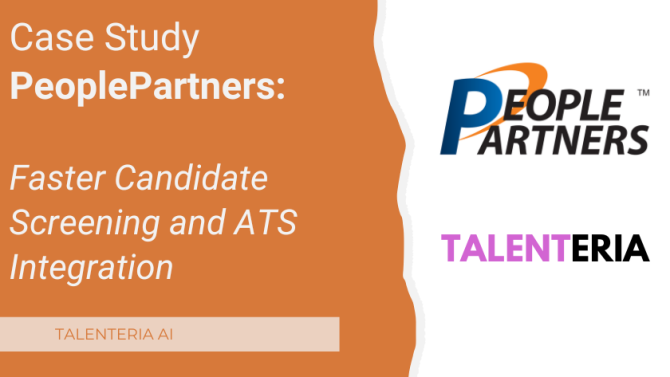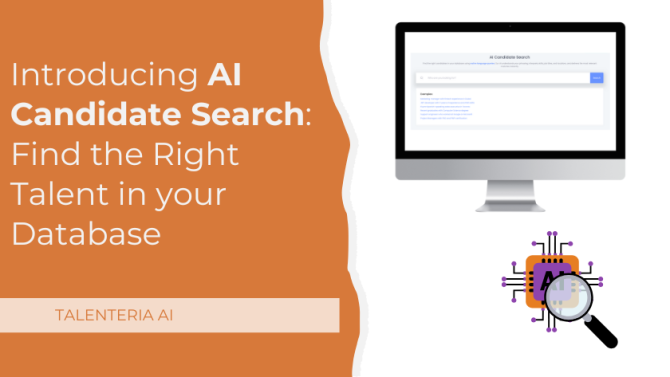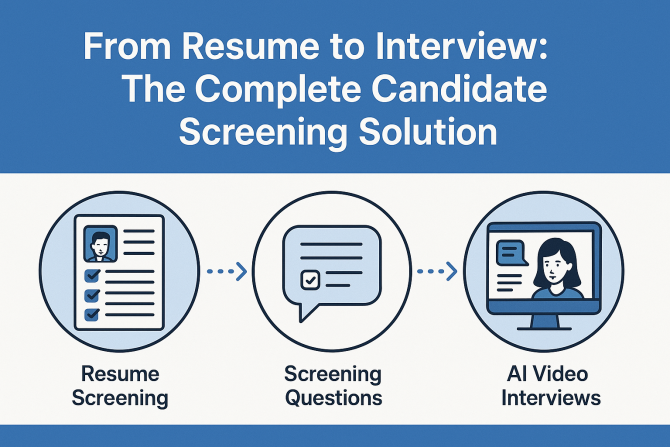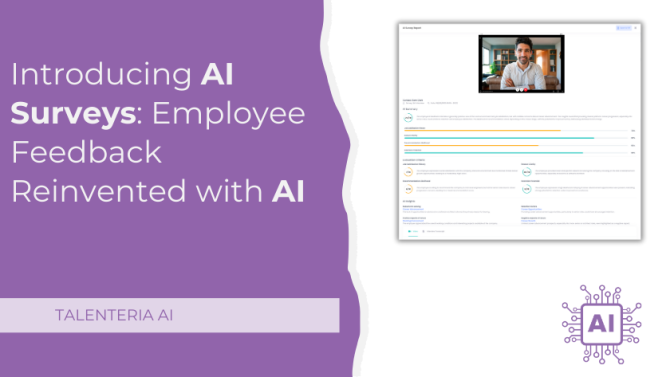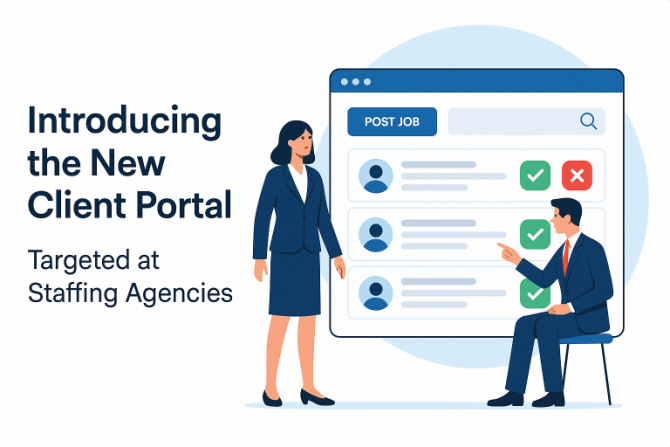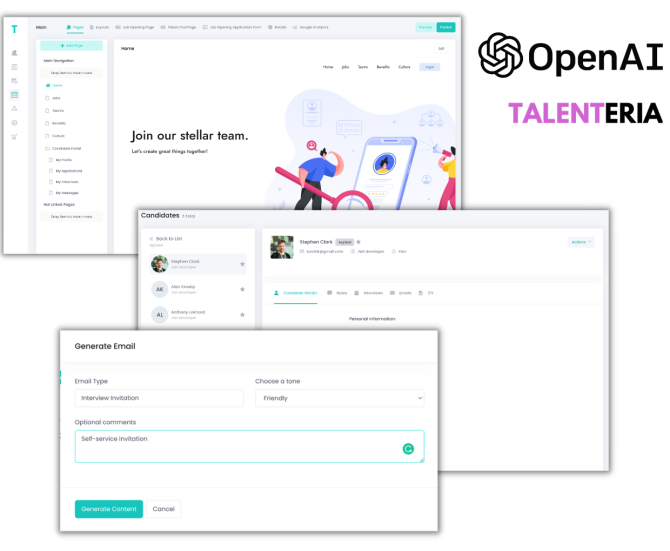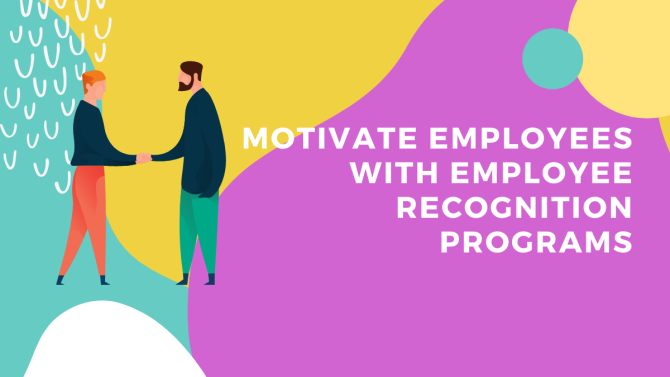
Giving your employees monetary compensation isn’t enough to make them feel appreciated or happy in the workplace. If this is what your company does, you’re most likely increasing your employee turnover rate. Read on to learn everything you need to know about creating employee appreciation programs.
What Is Employee Recognition?
Let’s start by defining what an employee recognition program is. Employee recognition is the acknowledgment of the company’s staff for their performance. Giving recognition to your employees involves a variety of methods, not only monetary.
As much as possible, you’d want the acknowledgment to be something meaningful to the employee. In other words, the recognition you give should be honest and personalize. The more meaningful it is to the employee, the more effective it is in motivating them.
Types of Recognition That Employees Like
The types of recognition that employees deem most memorable and valuable to them are:
- Public recognition (awards, certificates, or commendations)
- Private recognition (acknowledgments from a peer, customer, or boss)
- Promotion (increased scope of work as a form of trust)
- Monetary (pay increase, company-sponsored trip, or other prizes)
Depending on the nature of your company, you could also offer other forms of recognition. For example, let’s say your beauty products company also offers massage services and spa treatments. You could offer the salesperson of the month a full body massage for two. Or, you could offer the best masseuse a basket of beauty products from your line that you know they like to use.
Structured vs. Unstructured Recognition
Like there are various types of recognition, you could also classify recognition as structured or unstructured.
1. Structured Recognition
The more commonly practiced and traditional kind is what you’d call structured recognition. Structured employee appreciation uses a top-down approach and involves formal or ceremonial programs.
Employees know when the recognition will occur. Structured recognition is vital because it gives acknowledgment to all of your employees. A typical example of a structured recognition program is a company or work anniversary.
2. Unstructured Recognition
The other kind is unstructured recognition, which is a newer concept. Unlike structured recognition, this form of recognition occurs spontaneously and in spaces created for it. In unstructured employee appreciation, anybody could give praise to an employee.
It doesn’t have to come from a higher position only. It could be from a colleague, junior co-worker, or a co-worker from another department. Because everyone is freer to express their gratitude for someone, this modern practice is quickly becoming popular among companies that practice this.
Some examples of unstructured recognition include:
- Email to recognize the top performers of the week
- Recognition on a channel or chat tool
- A monetary reward for employees who finished a project
You don’t need to have a large budget to offer unstructured recognition. You also don’t need to fit a grand event into anybody’s schedule, so it’s easier to incorporate into daily life. Look at it as “filler” between structured recognition programs to keep your employees feel valued constantly.
Why Is Employee Recognition Important?
What is the goal of giving your employees recognition or acknowledgment for doing their job? Employee recognition creates a healthier work culture and environment. Plus, you’ll never go wrong with giving your employees a bit of time in the day to tell them how you appreciate their work.
If you want to get more technical and specific, below are a handful of reasons to start the best employee recognition programs.
1. Increase Employee Motivation
Whether a public award or a pay increase, appreciating and praising your employees can keep them motivated. More motivated employees are more likely to have a higher commitment, drive, and energy in their daily tasks.
Create a motivating workplace by starting with communication. We can’t stress enough how far good communication can bring your company internally and externally. Once you’ve set up clear communication with your employees, explain the reasons behind each task.
Tell them why everything they do is essential and how it helps the overall mission. If your employees know how much power their actions hold, they’ll be more encouraged to perform their best. Besides crossing over with the other benefits of employee recognition, increased employee motivation also brings other advantages.
Motivated employees are less likely to miss work or come to work late. They’re also more inspired to innovate and to be more creative with their work processes. You never know what kind of innovations they could add to the system that could help you cut costs and time.
2. Boost Your Employees’ Confidence in the Workplace
Another reason to recognize your employees is to boost their confidence. Some employees, especially those who are still somewhat new to the job, have yet to build up confidence in what they do. Time will naturally help them build it, but you can boost that timeframe as the HR department or employer.
Employees that are more confident in the workplace are effective communicators and assertive workers. They’re also more likely to travel further out of their comfort zone and innovate. They could volunteer to take up new projects in which you’d typically never see them show interest.
You can help boost employees’ confidence by giving them assignments that become incrementally more challenging. Don’t forget to be objective about their strengths and weaknesses. The more you understand what they’re good at, the better you can support the skills they need to improve.
Don’t punish your employees for making mistakes. Most of them may already feel insecure and discouraged from learning they made errors. Instead, encourage them to learn from the experience by teaching them how to analyze their errors.
3. Improve the Quality of Your Employee’s Work
Employee efficiency is one of the secrets to developing a top-tier company. If your employees can give their hundred percent in every task they do, your company will find success fast. Being recognized is one way to help them become more efficient in their jobs.
Couple your recognition with constructive feedback. Since you’re offering praise alongside feedback, your employees are more likely to accept the feedback. Putting together positive and constructive comments is also a good form of communication between employer and employee.
Another thing you can do to improve employee performance is to look into the reasons behind underperformance. A common and often significant mistake HR personnel and employers make is making assumptions about their employees. It is a sign that shows the lack of good communication and trust between the two parties.
With open communication and constructive feedback, you’re creating a culture of self-improvement. The more you boost your employees’ morale, the more likely they will take steps to improve their work ethic. In the long run, this is healthier and more efficient for the company and your employees.
4. Create a Collaborative and Healthy Environment
When you give someone sincere praise, they’re more likely to become more open to you. One of the goals of an employee appreciation program is to strengthen the relationships in the workplace. The more you express your appreciation for the employees, the more they’ll feel at home when they’re at work.
In return, they’ll also become more supportive and respectful of your company values and virtues. In short, having an effective employee recognition program is the best way to avoid a toxic work environment. Don’t forget that a happier workplace is a more efficient one, too.
5. Gain More Employee Loyalty With Employee Recognition
Do you have a problem with talent turnover? Even if you offer your top talent reasonable compensation, they can leave your company and go to another company where they’ll feel more valued. That is how powerful employee recognition is.
In other words, employees with high engagement have more loyalty to your company. High engagement looks like high motivation, innovation, and commitment. If employees know how much you value them for doing their job and giving beyond what’s necessary, they won’t have a reason to leave the company.
6. Attract Top Talent to Your Company to Get an Edge Over Your Competition
Your employee appreciation programs also extend to potential hires. Your current employees may refer professionals to you, especially if you’ve got an open position that needs immediate filling. Your employees themselves will become your endorsers to other professionals.
This word-of-mouth medium can bring top talent to you, especially if they don’t feel valued where they work. Your employee recognition program alone could be the primary driver of their interest in joining your workforce. Don’t forget to market your employee appreciation programs, too.
7. Lessen the Likelihood of Employee Turnover
There will be moments in their careers when an employee must decide if he should leave or remain in your company. It’s not as black and white as the saying, “when opportunities knock, answer the door.”
Often, your employees will feel conflicted deciding if they should let go of the healthy work environment and significant compensation your company offers.
It’s a great thing to have when you have competitors trying to steal your loyal employees away. As long as you give your employees the recognition and compensation they deserve, their loyalty will remain with you. Although you can’t stop anybody from leaving your firm, they’ll have a special place in their hearts for the recognition and motivation you provided.
Did you know that employers in the US lose over $5,000 each time an employee leaves the company? This loss includes the cost of recruiting new talent, training them, bringing them up to speed, and redoing abandoned tasks. Indirectly, incorporating an excellent employee recognition program helps your company save more and become cost-efficient.
Ideas for Employee Recognition Programs
You already know why you need an excellent employee recognition program. The next step is to figure out how to make or design them. Below are some ideas you could use as inspiration or learning tools to create an employee appreciation program for your company.
Aspects of an Effective Employee Recognition Program
Before we jump onto the ideas for effective employee recognition programs, let’s understand what makes these programs successful. To be brief, the best employee recognition programs are:
- Honest
- Authentic
- Individualized
- Memorable
- Meaningful
You don’t need a big budget to keep employees happy and appreciated in the workplace. For unstructured recognition, it’ll be enough to have sincerity and creativity in your arsenal. However, don’t replace it with structured recognition events, like annual formal recognition dinners or parties.
Social Media Shout Out
Getting a shout-out from your company on social media can be a big “flex” for your employees. This form of public acknowledgment won’t only recognize their efforts. It’s also a way to reach more online users that would otherwise be out of traditional media’s reach.
When this happens, your brand or company gains a broader audience. At the same time, this audience will see how you value your employees and their contributions. As you boost your employee, you’ll also boost your reputation to a broader range of internet users.
Annual or Quarterly Reviews
In this traditional method of employee recognition, you get the chance to offer both praise and constructive feedback. Consider creating personalized recognition for your employees during this formal event. Unlike the typical recognition template, employees will feel more appreciated and valued.
The drawback of an annual or quarterly review is that it happens only once or a few times a year. Your full-time employees need constant praise to continue to grow. They’d especially want to hear your appreciation after they undertook a challenging task.
Since feedback and praise from this method are scarce, consider mixing them with the other ideas we included here. Use the yearly or quarterly review to provide overall assessments. As for the short-term changes or improvements you want employees to have, include them in more frequent recognition methods.
Years of Service Awards
The average employee today stays with a company for 4.1 years. However, that’s only a median number. The average tenure for workers in a company still depends heavily on age and occupation.
Employees between 25 to 34 years old tend to stay with a company for 2.8 years. For employees aged 55 to 64, their median tenure is 9.9 years. On occupation, people in management tend to stay longer than those in service jobs.
Knowing these statistics, make it a point to make your employees’ time with you count. You don’t need to give them annual Years of Service awards. Instead, recognize the employees who’ve been with you longer than the average worker.
Show your gratitude for their dedication with Years of Service awards. A good benchmark is five years in your company. Don’t forget to add a reasonable prize or present to go with the award. These awards can help inspire younger and newer employees to stay with you and strive to gain those awards, as well.
Present a New Job Title
This form of employee recognition falls under the promotion type. You can’t give new job titles to every employee who does excellent at an assignment. It’s an incentive for those with the ambition to aim high and give their all.
Consider giving a new job title to the employees who acted accordingly during a difficult time in the company. Or, offer an advanced job title to someone who sealed a significant deal with a client or partner company. Employees that perform at these levels of success are the ones that deserve the new job title.
Pick an Employee of the Month
This idea is another typical and traditional employee appreciation program. Each month, the management or his peers select an employee they deem as the top performer. Compensations for employees of the month vary for every company, but they often include recognition and a bonus.
The drawback to this idea is that it can create a toxic environment if you fail to execute it well. Resentment and jealousy can grow among the employees if they don’t know what criteria determine the employee of the month. Instead of developing a collaborative and healthy workspace, your employees may become jealous, bitter, or competitive in the wrong way.
You can create a solution to this issue by shifting the focus of the recognition. If the company has had it in its culture for many years, removing it from the recognition program could help. Your employees would stop fighting each other for the top place when the “contest” ends.
Allow Them to Represent Your Company
Remember that your employees have different values and goals. Some may prefer monetary compensation. Others want recognition through public awarding ceremonies.
Yet, you may come across a few people who will choose to explore new career opportunities over those rewards. Often, you’ll see this trait in open-minded, focused, or ambitious workers. They’ll be happy to receive an invitation to stand as the company ambassador at events they usually wouldn’t or can’t attend.
It takes a great deal of trust to send someone to represent your company. In the end, it’s a win-win for both parties. The employee would gain experience while you pave the way for a future leader or innovator in the team.
Hold a Surprise Celebration
Not all recognition methods need to be heavily formal or company-wide. A team leader can also bring his employees to dinner for a surprise celebration on a job well done. It can also extend to the department offering a surprise party to a key employee.
The celebration doesn’t need to be grand or formal. A casual office party can help get the message of appreciation across as well as a large event. Plus, everyone shares the joy of the success or appreciation that the company is having.
Celebrate Important Life Events
Is an employee’s birthday or wedding anniversary coming up soon? Instead of hosting a surprise celebration and a birthday office party separately, why not join them in one event? It’s your call whether you’ll host a surprise party or a planned one.
Hosting a life event celebration sends out a message beyond appreciation. It also tells the employees that the company is present to celebrate them as people with a life outside work. It also helps the employees celebrate with the people from their work and personal life without spending double.
Gamified Recognition
Does your company have a lot of tech-savvy employees? If all or a majority of your employees are, consider incorporating digital recognition tools. The fun part about these tools is that you can use a “gamified” recognition style.
These tools create an awards or points system. Depending on their progress and achievements, your employees will gain points, award badges, or trophies. These awards can come from fellow workers or their managers or team leaders.
It’s an approach to recognition if the majority of your employees are younger. They are more likely to appreciate and feel motivated by this gamified style of recognition. If you use it, don’t forget about the older employees and how they might adapt to this system, too.
Notes, Newsletter, Press Releases, or Congratulatory Emails
Are you running a small company but still want your employees to feel valued? You don’t need to spend money every time you recognize the efforts of your employees. Sometimes, it’s enough to send a company-wide congratulatory email mentioning the top-performing employees.
If your company publishes a newsletter, consider featuring the employee or employees in the newsletter. Include their success stories or an inspirational interview with them. You can also do the same thing with a press release, which works just like a social media shout-out.
A much simpler and faster way to show your appreciation for your employees is to create handwritten notes. Finding an appreciative sticky note on their desk can make your employees’ day. Plus, it takes no time or money to make and send to them.
Bonus or Raise
Nothing motivates an employee to give their work their 100% like monetary compensation. It doesn’t work for all employees, but small bonuses can make the difference between an efficient program and a failed one. Also, if you feel that the employee deserves a raise, then don’t hesitate to give him one.
Offer Educational Prospects
If you recognize talent and drive in an employee, help them enhance it. Allow them to learn by sending them to a seminar, conference, or other educational opportunities. Career-oriented and work-focused employees will appreciate this form of recognition more than lavish dinners or press releases.
How to Build a Culture of Recognition
Next, let’s talk about how you could change the work environment to be more positive and open with recognition. How will you normalize the practice of expressing appreciation to someone for the excellent job they did? The secret to building a culture of recognition is consistency.
Your employee appreciation programs should be continuous. Don’t let the program die after a month or a few weeks only. Instead, practice using various forms of recognition.
If possible, try to show your appreciation to your employees daily. It will help boost their morale and motivation. Encourage them to do the same when they see something worth appreciating in the workplace.
Tips for Rolling-Out a Recognition Program
Let’s say you’ve got a list of employee recognition program ideas that you’ve got in mind for your employees. Since planning is different from executing, there’s one last thing to figure out. How will you implement a successful and effective employee appreciation program? Below are some tips for all managers, team leaders, and HR personnel.
1. Be Timely
Imagine getting a thank you six months after you finished the job for which they’re thanking you. The sincerity and meaningfulness of the appreciation get reduced because of the passing time. Thus, it’s also smarter if you avoid recognizing employees after a long while has passed.
2. Start With Small Accomplishments and Small Appreciations
Is the appreciation culture new to the workplace? Do you feel that suddenly introducing all these new activities and recognition methods may feel disingenuous? An excellent way to introduce it to the workplace is to start with small acts of appreciation. In time, everyone will get used to the way you acknowledge them and may even look forward to it after giving their best in their work.
3. Vary the Recognition You Give
Don’t depend on only one or two forms of employee recognition. We gave you a ton of ideas to encourage you to vary how you recognize your employees. Giving an employee handwritten notes every day can grow old, and the action can lose its meaning. As we said above, try to mix it up now and then.
Get Started With Talenteria
Employee recognition is a vital element of business success, no matter how small or large your company is. But, it’s important to also staff your company with top talent - the most suited candidates are more likely to have great accomplishments. If your company is looking to staff your offices with the best employees, check out Talenteria - we offer next-gen recruitment marketing tools and an intuitive career site builder!
